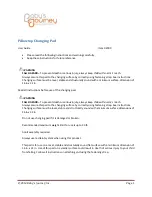
SlimLine Force Sensor, Type 9173B to 9177B
Page 22
9173B_002-286e-07.10
6.1.1.3
Load Application
A typical load cycle is shown in Figure 11.
1.
The system must be in an unloaded condition to define
the zero force bias;
2.
Reset the charge amplifiers and, if necessary, the peak
hold functions for both the reference and test system
measurement channels.
3.
Apply the load to the required working point and then
back to the unloaded condition.
4.
Record the peak values from the reference as well as
the test-system read-outs.
Reference system
F [MU]
Force
signal
F
FS
[MU] Measurement range (Full Scale) for reference
system charge amplifier
F
REFi
[MU] Reference system output for load cycle i
[MU] Peak value measured by the reference meas-
urement chain (for cycle i)
Test system
Q [pC]
Charge
signal
Q
FS
[pC] Measurement range (Full Scale) for test
system charge amplifier
Q
UUTi
[pC] Test system output for load cycle i
i
UUT
Q
ˆ
[pC] Peak value displayed on the test system
readout (for cycle i)
Reset charge amplifiers, start of measurement
Fig. 11: Load cycle definition
Detailed steps for the in-situ calibration of a typical test
system are shown in Fig. 12 and the calibration process
worksheet on the following page.
i
REF
Fˆ
Summary of Contents for 9173B
Page 1: ...Instruction Manual SlimLine Force Sensor Type 9173B to 9177B 9173B_002 286e 07 10...
Page 2: ...Instruction Manual SlimLine Force Sensor Type 9173B to 9177B 9173B_002 286e 07 10...
Page 27: ...Calibration and Maintenance 9173B_002 286e 07 10 Page 25 Fig 12 In situ calibration procedure...
















































